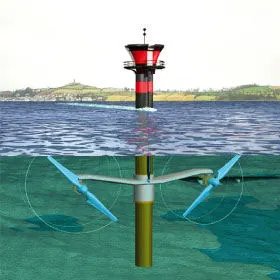
Unlocking the Potential: Tidal Energy Technologies for Sustainable Power
Tidal energy, harnessed from the ebb and flow of tides, holds immense promise as a renewable energy source. This article explores various tidal energy technologies, their mechanisms, environmental impact, and the role they play in the transition to sustainable power.
Understanding Tidal Energy
Tidal energy is generated by harnessing the kinetic and potential energy of tidal movements. Tides result from the gravitational forces exerted by the moon and the sun on Earth’s oceans. The rise and fall of tides create a renewable energy resource that can be tapped to generate electricity.
Tidal Stream Systems
Tidal stream systems, also known as underwater turbines or tidal turbines, operate similarly to underwater wind turbines. These systems are placed on the seabed in areas with strong tidal currents. As the tidal currents flow, they drive the turbines, converting the kinetic energy into electrical power. Tidal stream systems are particularly effective in areas with consistent and strong tidal flows.
Tidal Range Technologies
Tidal range technologies focus on exploiting the difference in water levels between high and low tides. One common approach is the use of tidal range barrages. These structures, typically built across estuaries, feature sluice gates and turbines. During high tide, water is trapped within the estuary. As the tide recedes, the stored water is released through the turbines to generate electricity.
Dynamic Tidal Energy
Dynamic tidal energy systems aim to capture energy from the horizontal movement of tidal currents. This is achieved through the use of technologies like horizontal-axis tidal turbines, which resemble underwater wind turbines. These turbines are strategically placed in tidal channels to harness the kinetic energy of the moving water.
Environmental Considerations
While tidal energy is a clean and renewable resource, it’s essential to consider its environmental impact. Tidal stream systems may affect marine ecosystems and underwater habitats. Adequate site selection, environmental impact assessments, and ongoing monitoring are crucial to minimize any adverse effects on marine life.
Advantages of Tidal Energy Technologies
Tidal energy technologies offer several advantages. They provide a predictable and reliable energy source, as tidal movements follow astronomical patterns. Tidal energy is also highly dense, meaning that a small tidal stream or range can generate significant power. Additionally, tidal energy systems have a lower visual impact compared to some other renewable energy sources.
Challenges and Limitations
Despite the promise of tidal energy, challenges exist. High upfront costs for infrastructure development, potential environmental impacts, and limited suitable locations are some of the challenges faced by tidal energy technologies. Addressing these issues requires ongoing research, technological advancements, and supportive policies.
Global Tidal Energy Projects
Several tidal energy projects around the world showcase the practical application of these technologies. From the MeyGen tidal energy project in Scotland to the Sihwa Lake Tidal Power Station in South Korea, these projects demonstrate the feasibility and potential scalability of tidal energy on a global scale.
Integration with Other Renewables
Tidal energy can complement other renewable energy sources, contributing to a diversified and reliable energy mix. Integrated systems that combine tidal energy with solar, wind, and other renewables enhance overall energy resilience and reduce dependency on conventional fossil fuels.
Future Prospects and Innovation
The field of tidal energy continues to evolve with ongoing research and innovation. Advancements in materials, turbine designs, and monitoring technologies hold the potential to enhance the efficiency and cost-effectiveness of tidal energy systems. As technology progresses, tidal energy is poised to play an increasingly significant role in the global energy transition.
Harnessing Tidal Energy for a Sustainable Future
For more in-depth insights into tidal energy technologies and their role in sustainable power generation, visit dataharza.my.id. Stay informed about the latest developments, projects, and innovations shaping the future of tidal energy.
In conclusion, tidal energy technologies offer a compelling solution for sustainable power generation. As the world seeks cleaner and more reliable energy sources, harnessing the ebb and flow of tides holds great promise for a more sustainable and resilient energy future.

